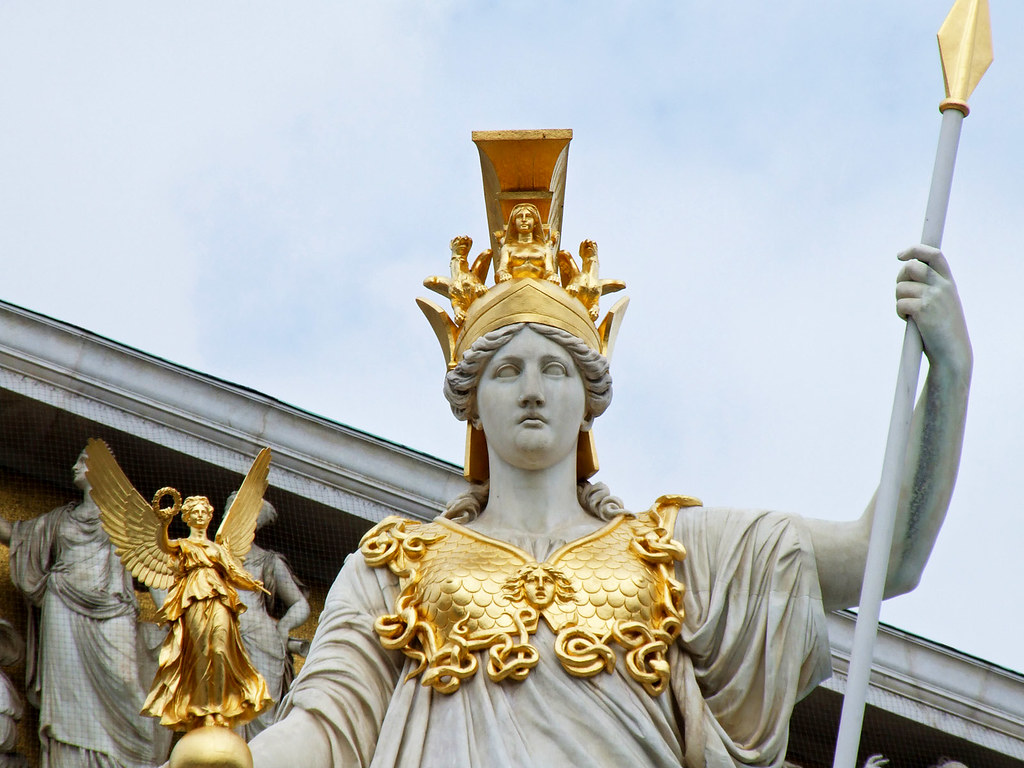From whatever angle you look at it, the choragic monument of Thrasyllus is impressive. It had been thus constructed to be visible by the whole of ancient Athens. Today, it stands imposingly above the bustling D. Areopagitou and Makrygianni Streets; it stops you in your tracks when seen from the Parthenon Hall in the Acropolis Museum; it appears huge as you look at it from the Theatre of Dionysus. Over the last few years, it was under restoration. Now, these limited restoration works
are completed.
the cave on the southern slope of the Acropolis
Read more at https://archaeologynewsnetwork.blogspot.com/2018/01/restoring-acropolis-lost-thrassylos.html#B2zVkLK3BceJF6Ab.99
The entrance to the cave on the southern slope of the Acropolis was constructed around 320 AD by Thrasyllus, judge of the contests of the Great Dionysia and was in the form of a small temple; the standard choragic monument. Three of its structural parts are standing, the rest lie on the ground. The monument collapsed when hit by a cannon in 1827, during the siege of the Acropolis by the Turks.
The choragic monument’s architect-restorer, Dr. Constantine Boletis (former Head of the Scientific Committee of the Acropolis South Slope Monuments) explains:
"After many years of research and restoration by the Committee of the Acropolis South Slope and the Ephorate of Antiquities of Athens, approximately 190 years after its collapse by Turkish cannon fire on February 1, 1827, the choragic monument of Thrasyllus converses again with the rock above the ancient theatre of Dionysus, enlightening us on the artist and aesthetic value of the Acropolis South Slope."
The monument of Thrasyllus, which from the inscription on its lintel dates to 320/19 BC, was modified in 271/70 BC by his son, Thrasycles.
"Its facade, almost a copy of the west façade of the south wing of the Acropolis Propylaea, looked like a gateway with two openings and pilasters, a central pillar, doors, a lintel with an unbroken row of a droplet motif, a frieze and a cornice. The frieze was decorated with ten olive wreaths, five on either side of a central ivy wreath, while above the cornice stood pedestals for choragic tripods."
Dr. Boletis says that in most works of historical iconography a marble statue of Dionysus can be distinguished in a central position on the monument, placed there, according to the most prevalent scientific arguments, in Roman times. This statue had been removed in 1802 on behalf of Lord Elgin and is now on display in the British Museum. As for the Christian chapel behind the ancient monument’s façade, it was there that, during Turkish rule, Athenian women went to pray for the health of their sick children. It was also in this cave however that adulteresses were shamed in public.
After the establishment of an independent Greek state, it had been announced that the monument was to be restored by the Archaeological Society. The majority of its stones, however, were used to restore the Byzantine church of Panagia Sotira of Nicodemus, commonly known as the Russian Church on Filellinon Street. The influence of this monument on western architecture is nevertheless important.
"When the stones of Thrasyllus were taken away from the area of the theatre of Dionysus as common building material, its morphology was adopted and came to be a significant feature of the Greek Revival movement in Great Britain, through designs in the book Τhe Antiquities of Athens by British artists J. Stuart και N. Revett."
The olive wreath also became a decorative motif on other buildings.
"In his analysis of the Schauspielhaus in Berlin, the great German architect Karl Friedrich Schinkel declared that the Thrasyllus monument had been the source of inspiration for its colonnades. Morphological elements borrowed from the monument adorn the Rotunda of the Capitol Building and the Lincoln Memorial in Washington."
Proper research began in 2002. Dr. Boletis supervised the implementation of the restoration study with Efrosyni Sampa MSc in charge of the building’s statics. The funding of the work did not advance smoothly. Work resumed in 2011 with restoration via Community Programmes and the Programme of Public Investments, with the project completed by the Ephorate of Antiquities of Athens. Four architectural members from the National Archaeological Museum were incorporated in the restoration, while a stone of the frieze bearing four emblematic wreaths was newly constructed with funds from the J F. Costopoulos Foundation. According to
Dr. Eleni Banou head of the Ephorate of Antiquities:
"The restoration of the Thrasyllus monument has changed the neighbourhood. On the South slope are both the Thrasyllus monument, whose recovery after its ‘loss’ impresses visitors, as well as the Asclepion which is not so obvious, due to the tall trees, and comes into view only when taking the uphill path. There is also the Klepsydra which changed the landscape of the North Slope, while in the Roman Agora, the interior of the Kyrrestos Horologion can be visited for the first time, as can the Fethiye Mosque. The latter is one of the most important Ottoman buildings in the historical centre of Athens, which hosts small-scale events such as the exhibition on Hadrian which we are preparing for mid-January."
For security reasons visitors cannot enter the Thrasylleion.
"The ascent is difficult. We want to reconstruct the steps of the Dionysus Theatre; neither has the walk been completely designed and this is also in the Ephorate’s programme."









